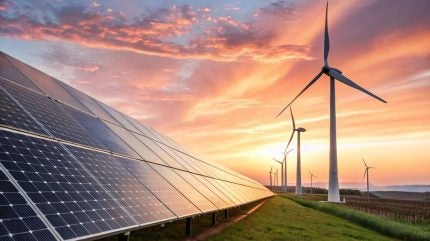
Solar and wind expanded faster than global electricity demand in the first half (H1) of 2025, leading to a slight year-over-year (YoY) decline in both coal and gas use, according to a new analysis of an energy think tank.
According to Ember’s analysis, record growth in solar and steady expansion in wind energy are reshaping the global power mix, with renewables overtaking coal for the first time.

Discover B2B Marketing That Performs
Combine business intelligence and editorial excellence to reach engaged professionals across 36 leading media platforms.
Ember senior electricity analyst Małgorzata Wiatros-Motyka said: “We are seeing the first signs of a crucial turning point. Solar and wind are now growing fast enough to meet the world’s growing appetite for electricity. This marks the beginning of a shift where clean power is keeping pace with demand growth.”
In H1 2025, global electricity demand increased by 2.6%, which translates to an additional 369TWh compared to the same timeframe in the previous year.
Solar energy significantly contributed to this rise, accounting for 83% of the increased demand. This was due to a record growth in solar generation, which saw an absolute increase of 306TWh, marking a 31% YoY growth.
The growth in solar and wind energy contributed to a decline in coal by 0.6% and gas by 0.2%, resulting in a total fossil-fuel generation decrease of 0.3%.

US Tariffs are shifting - will you react or anticipate?
Don’t let policy changes catch you off guard. Stay proactive with real-time data and expert analysis.
By GlobalDataFor the first time, renewables contributed more power than coal, producing 5,072TWh of global electricity, compared to coal’s 4,896TWh.
The modest 0.3% drop in fossil-fuel generation highlights the potential of wind and solar to meet total demand growth, indicating a shift towards renewable energy, stated the think tank.
In H1 2025, China and India also saw a decline in fossil generation as clean power growth outpaced demand.
China added more solar and wind energy than the rest of the world combined, reducing its fossil generation by 2%.
During the same timeframe in India, the expansion of clean energy sources outpaced demand growth by more than three times.
Nonetheless, demand experienced an unusually low increase of 1.3%, in stark contrast to the previous year’s 9% growth for the same period.
Conversely, fossil generation increased in the US and the EU.
In the US, electricity demand grew faster than clean energy supply. In the European Union, reduced wind and hydropower output resulted in greater reliance on gas and coal generation.
Despite this uneven progress, Ember suggests that increased deployment of solar, wind, and batteries could offer benefits in many economies.





